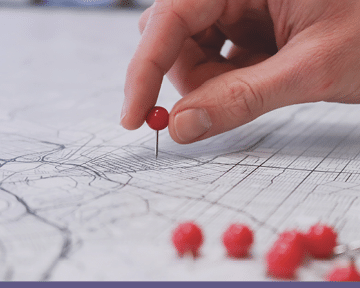The best approach to retail real estate involves a strategic, data-driven approach, with a focus on creating a dynamic and customer-centric environment. One key element of this approach is the implementation of a “test and learn” strategy. Testing is critical for every retail real estate decision because it provides valuable insights into factors such as location suitability and customer behavior. By conducting tests and experiments, stakeholders can assess the potential risks and rewards associated with different options before making significant investments. This empirical approach enhances decision-making accuracy and increases the likelihood of achieving success in the competitive retail real estate market.
The power of a test and learn strategy
A test and learn strategy involves experimenting with different aspects of your retail business to gather data and insights. By integrating a test and learn approach, retailers can more accurately measure potential competitor and cannibalization impacts.
Testing analytics allow retailers to gather data on sales, customer behavior, and feedback, and then compare this information with existing stores. Through this comparative analysis, retailers can assess whether the new store is drawing customers away from existing ones. By experimenting with pricing, promotions, and marketing strategies, retailers can make data-driven decisions about whether to proceed with the new location or adjust their store network to minimize competition and cannibalization effects, helping optimize profitability in retail real estate.
Case in point
Consider how this might look for a well-established retailer who is contemplating relocating one of their existing stores to a new location within the same city. Recognizing the significance of this decision, the retailer could employ a backtesting approach to assess the potential impact of the relocation on sales and customer traffic.
Leveraging historical sales data, demographic information, and foot traffic patterns, the retailer could simulate the performance of the store at the proposed new location over a defined period, comparing it to the actual performance of nearby stores. Through meticulous analysis, the retailer then gains valuable insights into the anticipated outcomes of the relocation, including potential revenue gains, cost savings, and changes in customer behavior.
Armed with this data-driven intelligence, the retailer can then confidently proceed with the relocation, confident that the decision was grounded in empirical evidence rather than speculation. The successful outcome of the relocation underscores the effectiveness of the backtesting approach in guiding strategic real estate decisions, enabling the retailer to optimize its physical footprint and drive sustainable growth.
Testing on market research, location analysis, and concept development
After implementing a test and learn approach to data assimilation and analysis, retailers can begin conducting thorough market research to identify potential locations with high foot traffic, demographic alignment, and competitive landscape analysis.
Consider factors like population density, income levels, proximity to transportation hubs, and the presence of complementary businesses. Once a location has been selected, develop a clear retail concept tailored to the local market’s preferences that includes a unique value proposition, store layout, and product mix.
Backtesting previous stores with rigor to give your predictive capabilities a boost
Rigorously backtesting previous store locations provides retailers with invaluable data insights, enabling the identification of success factors, refinement of predictive models, and mitigation of potential risks associated with new site selections. By analyzing historical data on sales, foot traffic, demographics, and competition, retailers can establish benchmarks, conduct scenario analysis, and continuously improve their decision-making processes. This iterative approach facilitates the development of more informed and strategic store placement strategies, enhancing predictive capabilities and optimizing store performance across the retail portfolio.
Testing for merchandising, marketing, and technology on new builds
Retailers can leverage data analytics from test and learn to gain a deeper understanding of customer preferences and shopping patterns, making pivotal decisions about how best to invest in an appealing and functional store design to enhance the customer experience and encourage repeat visits. Or, how to optimize a new store layout for efficient traffic flow and product visibility.
In-store testing can also help in developing a comprehensive marketing and promotion strategy to generate buzz for new developments and attract customers to your retail space. And, it can guide retailers to know which technology can best enhance the shopping experience, such as offering online ordering, contactless payment options, and personalized recommendations.
Why guess when you can test?
Testing is an essential component of every retail real estate decision as it enables property owners, developers, and retailers to assess the viability and potential impact of various factors before committing significant resources. By conducting tests such as pilot projects, backtesting, or market simulations, stakeholders can gather valuable data on factors like location suitability, customer traffic, and sales performance. This empirical approach allows them to make informed decisions, minimize risks, and optimize returns on their real estate investments. In a dynamic retail environment where market conditions and consumer preferences are constantly evolving, testing serves as a strategic tool for identifying opportunities, mitigating uncertainties, and ensuring the long-term success of retail real estate ventures.
Want to learn more about retail real estate strategies? Check out these resources:
Market research and analysis for a successful retail real estate strategy
Assessing risk and reward in real estate investments
Unlock the value of your data with a/b testing




